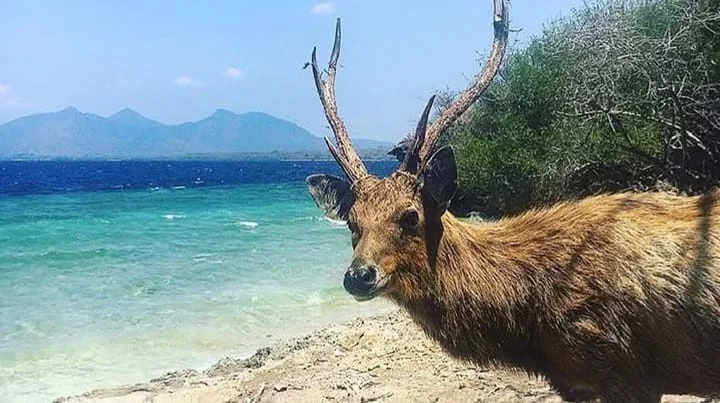While South Bali draws crowds with its bustling beaches and nightlife, and Ubud captivates with art and culture, West Bali remains one of the island’s most untouched regions. This area is often described as Bali’s “last frontier,” a land of wide-open landscapes, traditional villages, and rich biodiversity. For adventurous travelers seeking raw nature and authentic cultural encounters, West Bali offers an experience unlike any other.
Why Visit West Bali?
West Bali is far less developed than the south and east, making it a haven for those who love off-the-beaten-path adventures. Here, time seems to slow down — water buffalo graze in rice fields, fishermen set sail from quiet villages, and jungles echo with the sound of exotic birds.
It is also home to West Bali National Park, a protected area that covers lush forests, mangroves, coral reefs, and the endangered Bali Starling. Beyond nature, West Bali is rich in history and tradition, from ancient temples to centuries-old cultural practices that are still alive today.
Top Highlights of West Bali
1. West Bali National Park
The jewel of this region, West Bali National Park (Taman Nasional Bali Barat), is a sanctuary of biodiversity. Covering around 190 square kilometers, it includes rainforests, savannas, mangroves, and even marine areas. It’s the only natural habitat of the Bali Starling, a rare and striking white bird that has become a symbol of conservation.
Visitors can go trekking, birdwatching, or snorkeling in the park’s protected waters, which are home to colorful coral reefs and abundant marine life.
2. Menjangan Island
Just off the coast of the park lies Menjangan Island, often considered one of Bali’s best diving and snorkeling spots. The island is surrounded by crystal-clear waters and dramatic coral walls teeming with fish, turtles, and even reef sharks. Unlike other crowded dive sites in Bali, Menjangan offers a tranquil underwater experience, making it ideal for both beginners and experienced divers.
3. Pemuteran Village
Although technically bordering North Bali, Pemuteran also serves as a gateway to West Bali adventures. This peaceful fishing village has grown into a small eco-friendly hub, famous for its reef restoration projects and diving opportunities. It’s the perfect base for those who want to combine relaxation with exploration.
4. Rambut Siwi Temple
Perched on a cliff overlooking the ocean, Pura Rambut Siwi is one of Bali’s most significant sea temples. With fewer crowds than Tanah Lot, it offers a more spiritual and serene atmosphere. The temple is believed to protect fishermen and villagers in the area, and its dramatic coastal setting makes it especially photogenic at sunset.
5. Jembrana Regency & Traditional Arts
West Bali is home to the Jembrana Regency, an area known for its traditional culture. One of the unique highlights here is the Makepung buffalo races, where pairs of water buffalo, adorned in colorful decorations, race through the rice fields. It’s a thrilling and deeply cultural event that reflects the agricultural heritage of the region.
6. Palasari & Blimbingsari Villages
West Bali also holds an interesting cultural diversity. Villages like Palasari and Blimbingsari are home to Bali’s Catholic and Christian communities, with beautiful colonial-style churches and peaceful village life, offering a different perspective on the island’s spiritual landscape.
Nature and Wildlife
Beyond the highlights, West Bali’s landscapes are incredibly diverse. You’ll find mangrove forests, open savannas reminiscent of Africa, and hills that stretch down to remote black-sand beaches. Wildlife lovers will be delighted by the chance to see wild deer, macaques, monitor lizards, and countless species of birds. The combination of land and sea ecosystems makes West Bali a paradise for eco-tourism.
Practical Tips for Visiting West Bali
- Getting There: From Denpasar or Canggu, it takes around 3–4 hours by car. The roads are scenic, passing through rice fields and coastal areas.
- Best Time to Visit: April to October is ideal for outdoor activities, while the rainy season (November–March) offers greener landscapes but less predictable weather.
- Where to Stay: Pemuteran and Gilimanuk are the most common bases, with eco-lodges, homestays, and dive resorts available.
- Activities: Diving, snorkeling, trekking, birdwatching, temple visits, cultural tours, and buffalo races (seasonal).
- Who It’s For: Perfect for nature lovers, divers, eco-travelers, and anyone who wants to escape the busier parts of Bali.
Final Thoughts
West Bali remains one of the island’s best-kept secrets — a region of unspoiled beauty, fascinating culture, and unparalleled biodiversity. Whether you’re diving among coral walls at Menjangan, watching the rare Bali Starling take flight, or experiencing the thrill of buffalo races, West Bali delivers moments that feel raw and real.
It’s not just a destination for sightseeing; it’s a chance to immerse yourself in the wild heart of Bali. For those who crave adventure and authenticity, West Bali is a journey worth taking.

